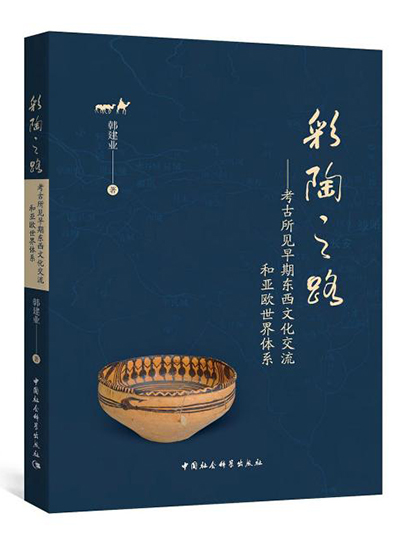Cultural exchanges along the Painted Pottery Road

The Painted Pottery Road: Archaeological Insights into Early East-West Cultural Exchanges and the Eurasian World System
The Painted Pottery Road: Archaeological Insights into Early East-West Cultural Exchanges and the Eurasian World System, by Han Jianye, a professor from the School of History at Renmin University of China, attempts to explore the East-West cultural exchange system prior to the Silk Road.
Multiple designations are used to refer to the period preceding the Silk Road in academic circles, such as the Jade Road, the Lapis Lazuli Road, the Bronze and Iron Road, the Metal Road, the Sheep and Horse Road, and the Painted Pottery Road. The term “Prehistoric Silk Road” is also frequently used, although Han prefers not to use it since the “prehistoric” era varies across different regions. By the pre-Silk Road era, China and most of the Western regions had already entered proto-historical and historical periods. As “prehistory” has a specific definition, it is inappropriate to employ the concept to refer to previous stages of the Silk Road that traversed the East and West.
Han instead advocates the use of the Painted Pottery Road, arguing that it was the primary channel of early cultural exchanges between the East and the West, or the precursor of the Silk Road. Although the Painted Pottery Road is not a new concept, the author endows it with new connotations, namely the westward penetration of early Chinese culture represented by painted pottery and the reverse flow of Western culture along this channel.
Han not only clearly elucidates the four phases of the Painted Pottery Road’s westward expansion, but also integrates it into the division of historical stages such as the Chalcolithic Age, the Bronze Age, and the early Iron Age. He divides the specific transmission routes into northern and southern paths, separated by the Qinghai-Tibet Plateau. The book systematically demonstrates the spread of painted pottery to Xinjiang and Central Asia through the northern route, and to Kashmir via the southern route.
In addition to macro research, the book also includes a host of specific archaeological case studies on the origin and dissemination of certain shapes and patterns, including the sawtooth pattern of painted pottery, cone-shaped crown symbols, shamanic figures, round-bottom pottery, and clay kettles. These concrete instances serve as important material evidence of China-West communication along the Painted Pottery Road.
Shao Huiqiu is a professor from the Collaborative Research Center for Archaeology of the Silk Roads at Northwest University.
Edited by YANG LANLAN
